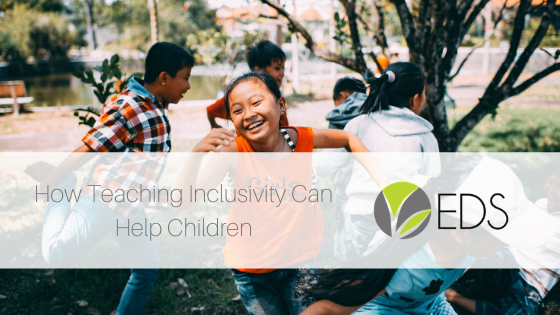In recent years, the importance of inclusivity has been showcased in our media via television, movies, and more. More people are realizing how important it is to include all types of people in all aspects of life.
We may not realize it, but inclusivity matters even in early childhood. Think of the trope in movies where a student is left out of games at recess, or has nowhere to sit at lunch. While movies often use fiction and fantasy to make themselves more entertaining, that’s one trope that is unfortunately true.
When a student is excluded by their peers, this is know as relational aggression (or social bullying). Many parents may not treat this form of bullying as seriously as it needs to be treated. It seems as if the solution is simple: just find someone else to talk to. Sadly, it doesn’t always work that way.
Social bullying is something that children can quickly internalize and start to blame themselves for. If the negative feelings from social bullying aren’t worked through, children could start to develop feelings of self-hatred and bitterness towards others, which could result in dangerous consequences.
So what can be done to prevent social bullying? In this blog post, we’ll be discussing how parents can help teach their children to include others and make everyone they meet feel welcome and loved
Promote individuality in kids and teens
Not only do you want to encourage your kids and teenagers to be an individual themselves, but you also want to encourage them to accept individuality in other people. When children recognize that everyone has their quirks and values, they’ll be more accepting of others and maybe even encourage other kids to be themselves.
Examine your own behavior
It’s common knowledge that kids learn from what they see around them. This is why it’s so important to make sure that you’re also behaving appropriately in front of them. Think about your own actions towards others in front of children. Are you setting a good example for them?
Encourage your kids to reach out to others and have a diverse group
When you’re young, it can be easy to be caught up in your one singular set of friends. Encourage your children to reach out to anyone who seems like they need support. Do they see a peer doing things alone often? Suggest to your kids that they should check in and see if an isolated person is okay.
Another good thing to encourage in your children is to befriend others who are different from them. When you have more diversity and differences in a group, it’s more likely for them to be accepting of others.
Teach your children boundaries
While including others is important, it’s also important that your children are maintaining healthy relationships with others. Make sure to teach them that it’s okay to let someone go if they’re toxic or making them feel uncomfortable. They should also know that someone else’s mean behavior does not mean they should reciprocate. Discourage jokes that may come off as “too far” or inappropriate. They should know about respecting others, but also making sure they’re respected themselves.
Communicate and empathize
Teaching your children about communication and empathy may be one of the biggest tips to take from. When children know how important it is to communicate, they will be more likely to speak up for themselves and others.
Kindness is infectious; one kind act can lead someone else to commit their own kind act.
We’re hoping that steps like these can help children become more empathetic, kind, and understanding towards others. Bullying has been around for a long time, and we’re hoping someday it can be almost entirely eliminated.
Do you have any advise on teaching children about inclusivity? How do you prevent social bullying with your family? We’d love to hear from you.

